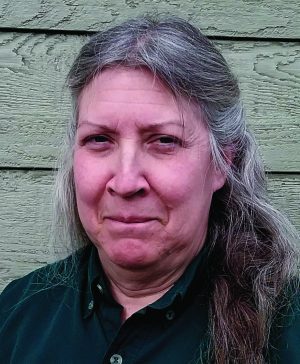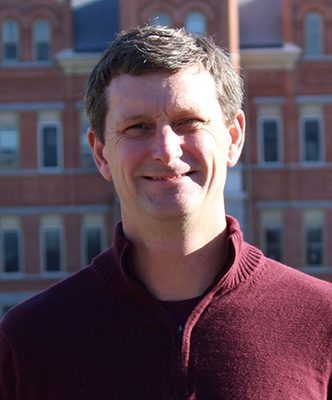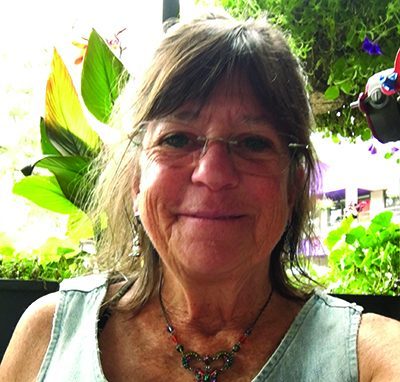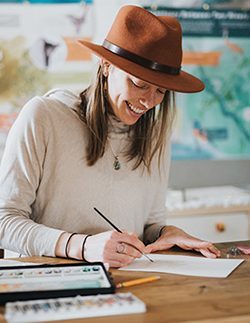We hope you'll join us for our Spring 2022 Speaker Series, inspired by Yellowstone National Park and the 150th anniversary of its creation in 1872. Registration is required for each program but it's easy. Scroll down and click on each webinar title that you'd like to attend, complete registration and you will receive an email with a Zoom link. The Yellowstone Gateway Museum is happy to present these free programs but we hope you'll consider making a donation. Any amount helps us deliver the quality programming that you expect and now can enjoy from home. Please contact Executive Director Mark Brammer, 406.222.4184, for more information.
Programs will be uploaded to YouTube after each live presentation. Click here to visit our YouTube channel.
Horses, Hotels, and Hospitality: the Huntley, Child, and Nichols families in Yellowstone
Wednesday, April 6, 7:00PM
Click here to view the program on YouTube.
Ruth Quinn, presenter
Yellowstone National Park's grand hotels -- Old Faithful Inn, Mammoth Hotel, and Lake Hotel -- are the realization and evolution of one man's vision. Coming into the park with stagecoach transportation in 1892, until his death in 1931, Harry W. Child built and shaped a tradition of service we enjoy in Yellowstone today. The program tells the story of three generations of the Child Family, along with their friends and relations.
For 32 years, Ruth Quinn has spent summers in the Park’s interior, including twenty-five years conducting tours of Old Faithful Inn. She is a Certified Interpretive Guide with the National Association for Interpretation. Winters bring her to Gardiner Human Resources to help hire staff for Xanterra’s nine lodging facilities. She is the author of Weaver of Dreams: The Life and Architecture of Robert C. Reamer, and Horses, Hotels, and Hospitality: Harry W. Child’s Epic Vision for Yellowstone Park. She met her co-author Nan Sigrist, another long-term concession’s employee, while researching her first book. She’s excited to share their recent efforts at combining old time stories with historical tidbits to tell the story of three generations of the Huntley, Child, and Nichols families, and their contributions to Yellowstone’s tradition of service
Before Yellowstone: Native American Archaeology in the National Park
Wednesday, April 13, 7:00PM
Click here to view program on YouTube.
Douglas H. MacDonald, presenter
Since 1872, visitors have flocked to Yellowstone National Park to gaze in awe at its dramatic geysers, stunning mountains, and impressive wildlife. Yet more than a century of archaeological research shows that the wild landscape has a long history of human presence. In fact, Native American people have hunted bison and bighorn sheep, fished for cutthroat trout, and gathered bitterroot and camas bulbs here for at least 11,000 years, and twenty-six tribes claim cultural association with Yellowstone today.
Douglas MacDonald tells the story of these early people as revealed by archaeological research into nearly 2,000 sites, many of which he helped survey and excavate. He describes and explains the significance of archaeological areas such as the easy-to-visit Obsidian Cliff, where hunters obtained volcanic rock to make tools and for trade, and Yellowstone Lake, a traditional place for gathering edible plants. MacDonald helps readers understand the archaeological methods used and the limits of archaeological knowledge. From Clovis points associated with mammoth hunting to stone circles marking the sites of tipi lodges, Before Yellowstone [the program and book of same title] brings to life a fascinating story of human engagement with this stunning landscape.
Douglas is a professor in the Department of Anthropology at the University of Montana. Since 2006, his research at UM has been focused on the Native American archaeology of Montana, Wyoming, and the Greater Yellowstone Ecosystem. In 2018, the University of Washington Press published Before Yellowstone: Native American Archaeology in the National Park. This book provides an overview of the last 11,000 years of Native American use of the Greater Yellowstone Ecosystem. Douglas has published other titles, including Montana Before History (2012, Mountain Press), Yellowstone Archaeology, and Lithics in the West.
The Dynamic Floor of Yellowstone Lake: The Last 14,000 years of Hydrothermal Explosions, Venting, Doming, and Faulting
Wednesday, April 20, 7:00PM
Click here to view the program on YouTube.
Lisa Morgan, presenter
Hydrothermal explosions, unrelated to magmatic eruptions, have emerged as one of the most important and least understood geologic hazards in Yellowstone National Park (YNP) and similar volcanic and hydrothermal areas worldwide. A sediment-coring campaign was conducted in 2016 in Yellowstone Lake to better understand the frequency, distribution, processes, and causes of hydrothermal explosions over the last ~14,000 years. Remarkably, subaqueous hydrothermal explosion deposits in the sedimentary record are largely unrecognized and their characteristics are fundamentally unknown. Lisa will discuss our findings, which provide a basis for understanding hydrothermal explosion deposits in subaqueous sedimentary sequences and supplement recent and ongoing integrated research on hydrothermal fluid systems venting on the lake floor.
Lisa Morgan is scientist emeritus for the U.S. Geological Survey, whose focus is on the geology and geophysics of volcanic terrains. With co-author Ken Pierce, Morgan developed major concepts and a model for development of the track of the Yellowstone hot spot, documenting the northeastward spatial and temporal progression of volcanism, faulting, and uplift along the 17-Ma Snake River Plain-Yellowstone Plateau volcanic province. From 1999-2004, Morgan with colleagues mapped the floor of Yellowstone Lake becoming the first to recognize the complex geology present and active on the floor of Yellowstone Lake. Processes such as hydrothermal explosions, emplacement of rhyolitic lava flows, landslides, extensive hydrothermal vent fields, and active faulting contribute to the geologic framework of the lake. Presently, her research with the Yellowstone Volcano Observatory on the Yellowstone Plateau focuses on the geology and associated hazards in Yellowstone Lake.
The Artist's Field Guide to Yellowstone: A Natural History by Greater Yellowstone's Artists and Writers
Wednesday, April 20, 7:00PM
Click here to view the program on YouTube.
Katie Shepherd Christiansen, presenter
Yellowstone naturalist and artist Katie Shepherd Christiansen created the book "The Artist's Field Guide to Yellowstone," in collaboration with fifty local artists and writers. The book introduces readers to the wildlife of the Greater Yellowstone Ecosystem. This robust anthology of eclectic artwork and inspiring storytelling offers an enlivened take on the traditional field guide and argues for the intrinsic value of this world-renowned ecosystem.
The book is a sensible field guide and elegant art book to highlight the unique biodiversity of the Greater Yellowstone Ecosystem, organized across four habitat strata: sky, earth, soil, and water. Writers and artists pair up to reveal new ways of understanding key species through prose, poetry, and artwork. Christiansen will discuss various aspects of the book (process, goals, outcome, etc.) during the program, featuring book artwork and writing excerpts. A special focus of the evening are appearances by some of the artists and writers, including Jenni Lowe-Anker, Elise Atchinson, DG House, and Karen Reinhart.
We hope you enjoy the speaker series and that you'll pass along this opportunity to learn more about the neighboring areas that border Park County, Montana.
All of our programs are uploaded to our YouTube channel. Consider subscribing!









